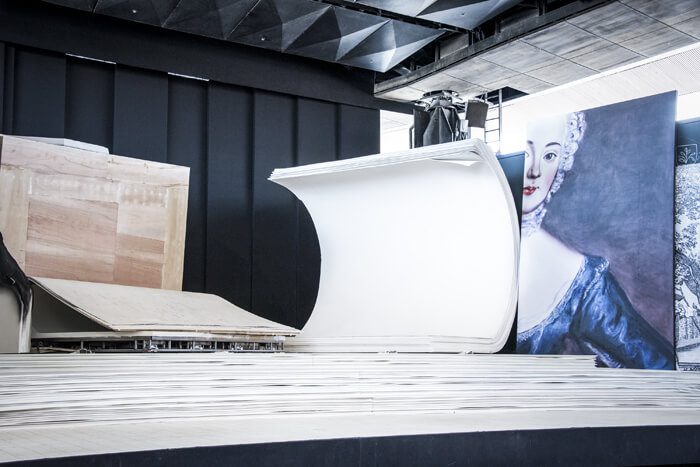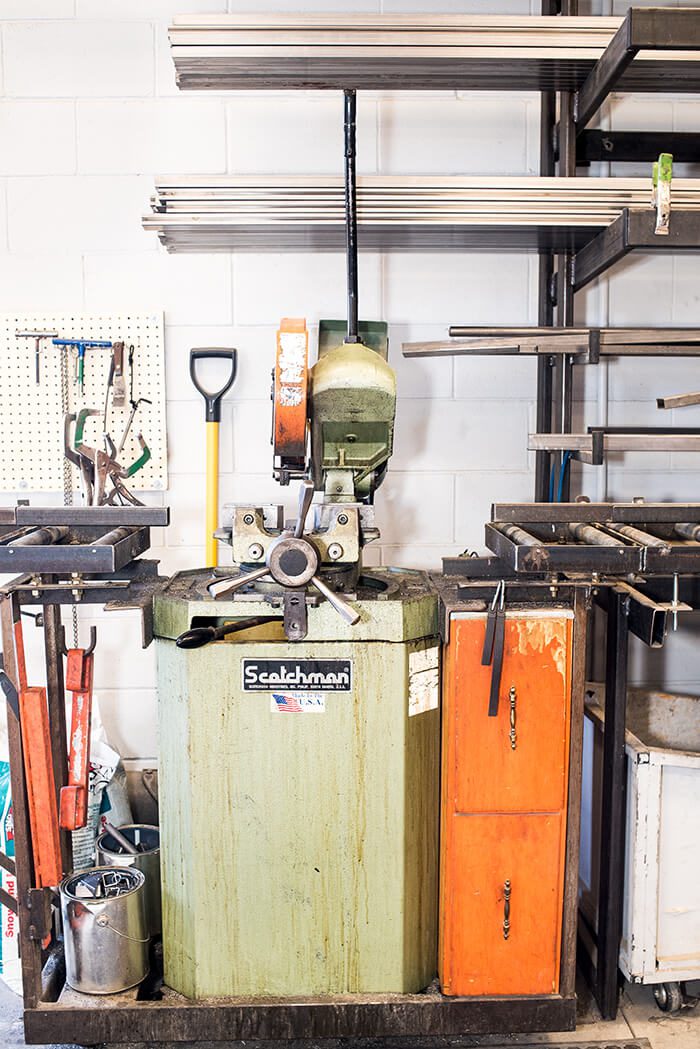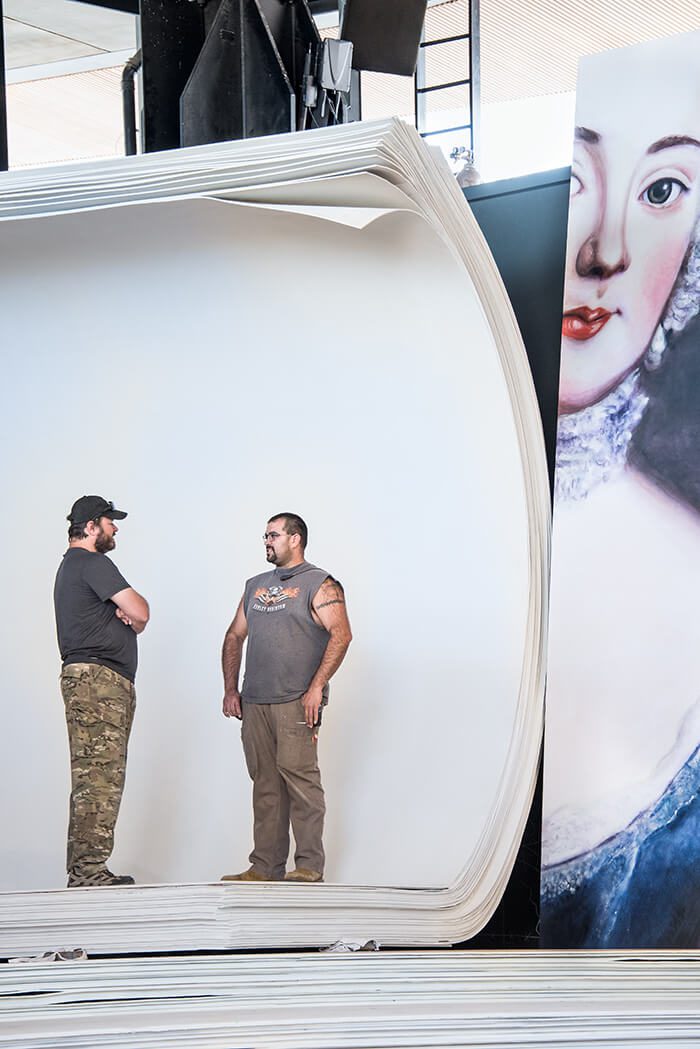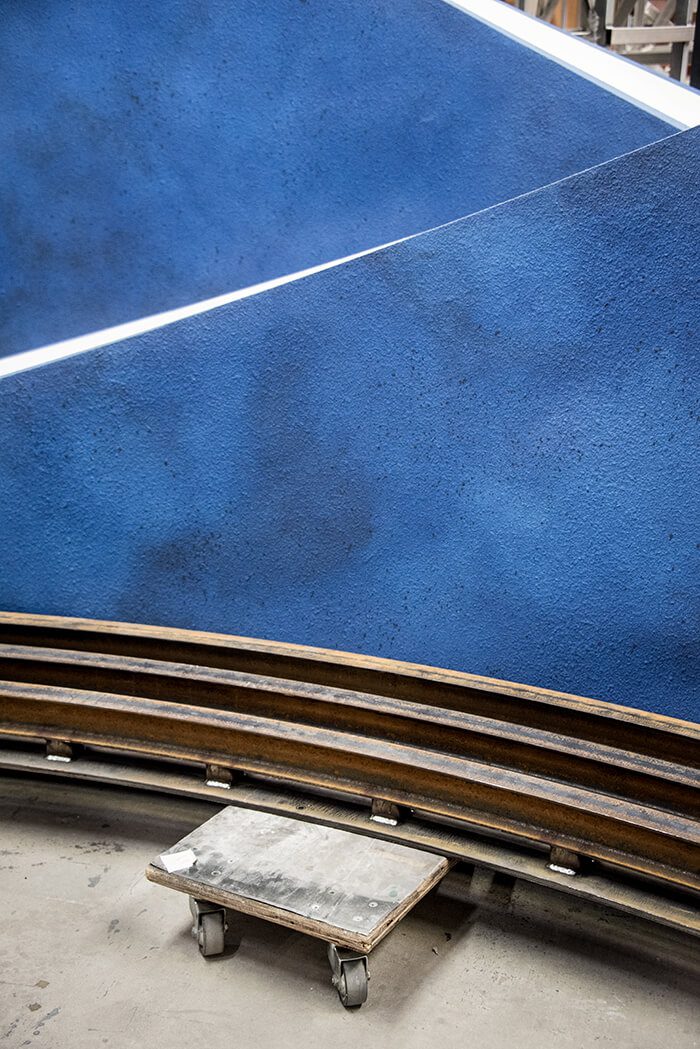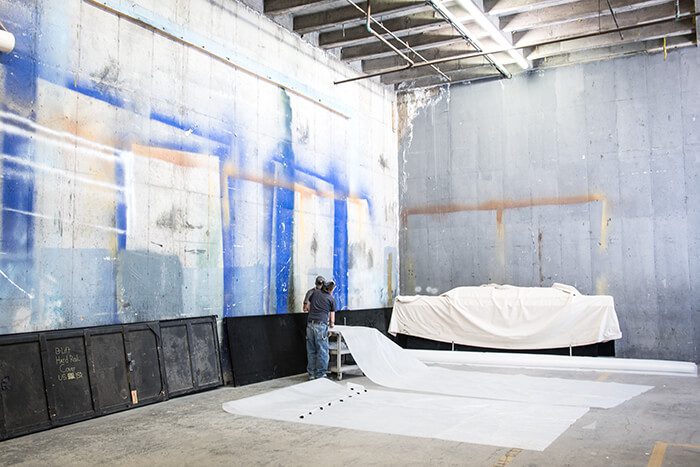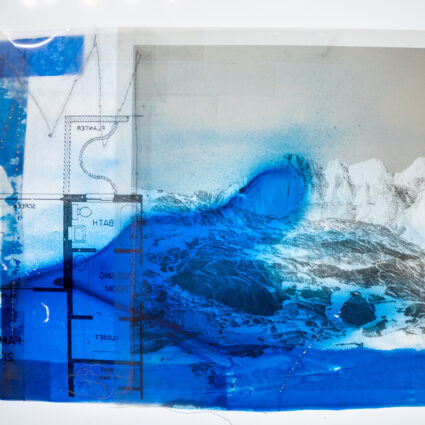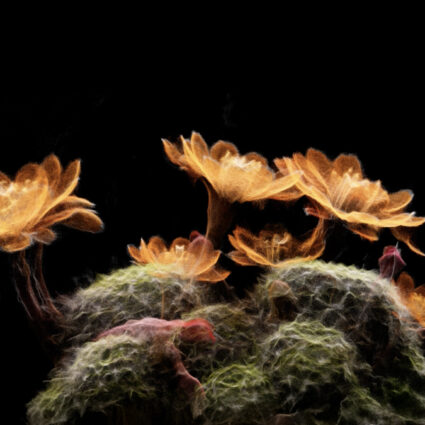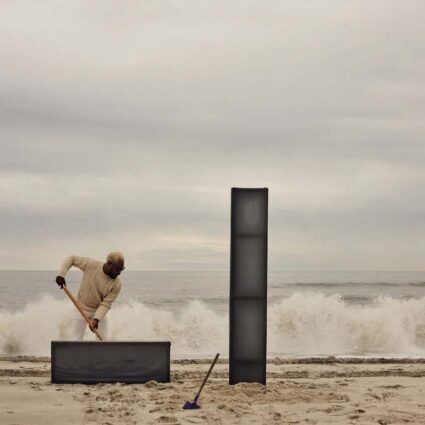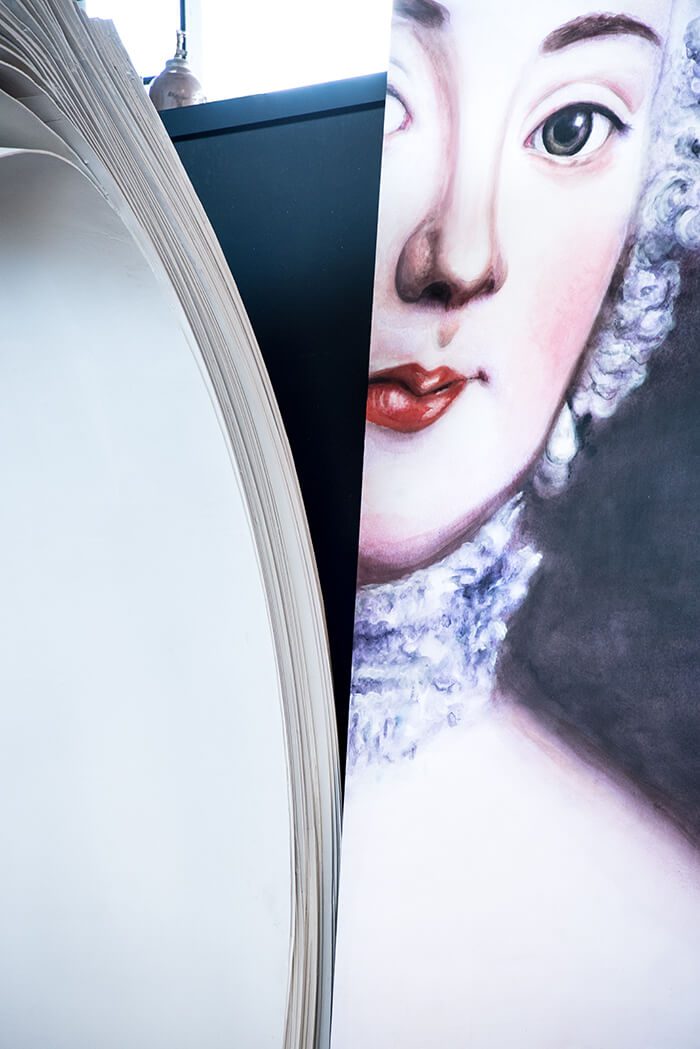
“They’ll say, ‘Why won’t it just float there?’” Scott Schreck says with a little smirk. “Then I go, ‘I’ll tell you what, let me work on that antigravity device for you.’” He’s talking through the joys and difficulties of translating artistic visions to brick and mortar, his principal mission as technical director of the Santa Fe Opera.
Moments later, Schreck reveals that he may, in fact, possess gravity-defying powers. In his last job, a five-and-a-half-year stint as technical director of Arena Stage in Washington, D.C., one production called for a full bandstand to hover above the stage. “It was [Rodgers and Hammerstein’s] Carousel. They wanted a gazebo on top of a platform, with two bridges extending from it so the actors could walk across,” he says. “The band was a live load with cadence, because everyone would move together as the conductor went, ‘Okay, one, two…’”
Schreck measured the weight of the platform—four thousand pounds—and then estimated each person’s load. “250 pounds per person, just in case, and we had one guy who was more than that,” he says. In the end, the suspended structure he and his team created could bear six ever-shifting tons without budging an inch. Arena Stage is a theater in the round, so the set piece was a 360-degree magic trick—a literal representation of a fantastical idea that floated into the mind of the set designer.
Santa Fe Opera’s stage department acts as a bridge across this gaping divide, between the physics-free world of the imagination and the nuts-and-bolts reality of theater production. Schreck says it still surprises him how well the conceptual relay works, from the librettist, to the artistic director and set designers, to him and his builders.
Santa Fe Opera’s scene shop acts as a bridge across this gaping divide, between the physics-free world of the imagination and the nuts-and-bolts reality of theater production.
“You would think that the author’s idea should ultimately be the perfect vision of what this is, and that it would just get continuously watered down from there,” he says. “But in fact, if it’s a good piece, it synergizes into something far better than where it started.” It’s early June, and though the opera’s sixty-second season launches in a few weeks, Schreck has found time for a whirlwind tour of the entire process, from shop to stage.
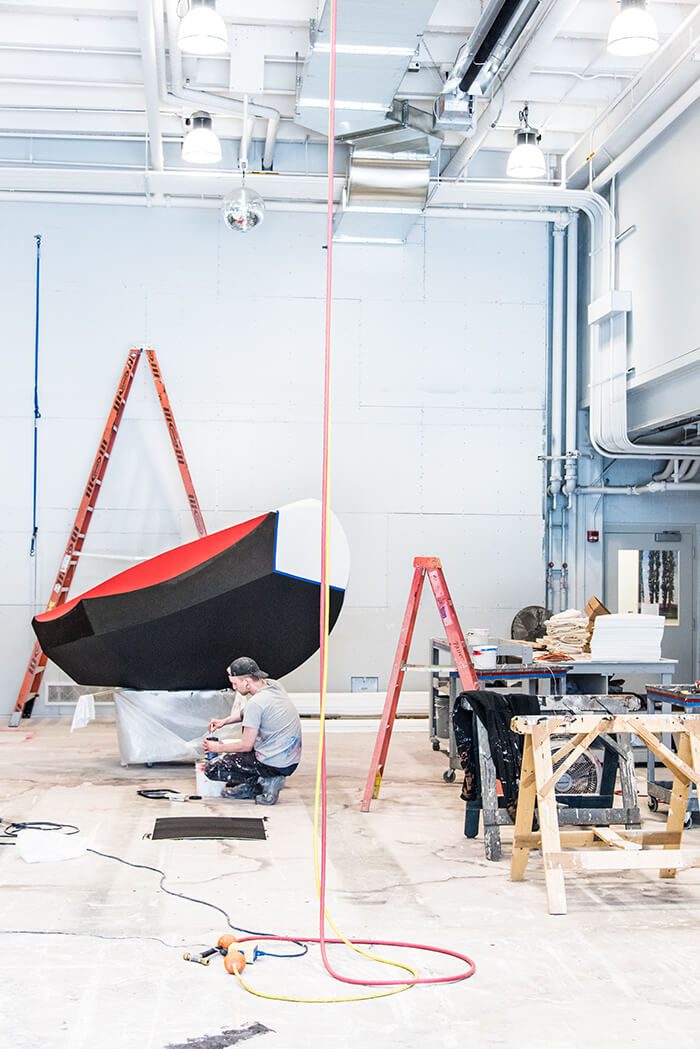
DUNGEONS + DRAGONS
Schreck has worked in the performing arts industry for nearly thirty years, so he took the helm at Santa Fe Opera with confidence. He left his job in Washington, D.C., in November 2016, the day before the presidential election. “Just in time. That city’s in flames now,” he says with a grim chuckle.
In Santa Fe, he leads a team of about forty people. There’s a five-person crew of set builders that works year-round and additional workers that come on as the season approaches. The second part of his staff is an army of apprentice stagehands—sixteen in all—overseen by six supervisors. For a number of his staffers, Schreck is both their boss and their Dungeon Master.
“We have a weekly Dungeons & Dragons game going,” Schreck says. “I’m the game master for this one, because I’m the only one with actual experience.” He’s been playing the fantasy role-playing game since the 1980s. As Dungeon Master, he verbally conjures a medieval universe for the other players to explore through collaborative storytelling. “It’s a dungeon in my own mind, a labyrinthine world,” Schreck says. “I’m having trouble separating this one and that one right now.” It makes sense: in both cases, he and his staff work together to build immersive environments that set the stage for grand odysseys. Then again, the stakes are a bit higher at the opera.
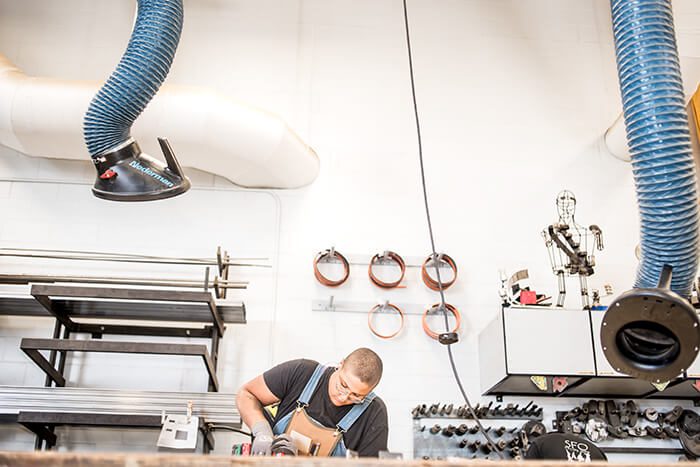
“Scenery is dangerous because it could kill people,” Schreck says. “But I’d rather take on the responsibility of the safety and all that because my material, unlike with costumes, doesn’t have an opinion.” That’s only partially true. Schreck doesn’t have to directly manage the opera divas, but his process starts with a painstaking conversation with the set designer for each production.
The opera mounts five productions each season, but this year Schreck’s team only had to build three sets from scratch. Candide, Doctor Atomic, and Ariadne Auf Naxos are company premieres, while Madame Butterfly and The Italian Girl from Algiers are reworks of past productions. As early as this February, Schreck started to receive sketches and descriptions from the set designers of each new production.
“I got my BFA in set design, so I can speak designer,” Schreck says. He grew up on Long Island and went to college at the State University of New York, Purchase. His first job out of school was at the New York City Opera as assistant props master. That was in 1995, when Schreck was twenty-five years old, and he’s worked across the nation in every corner of the performing arts world since then. “With the designers, the game that we have to play is, Are they ready? Have they worked out the blocking?” he says. “In this case, we actually ended up building the first show last.”
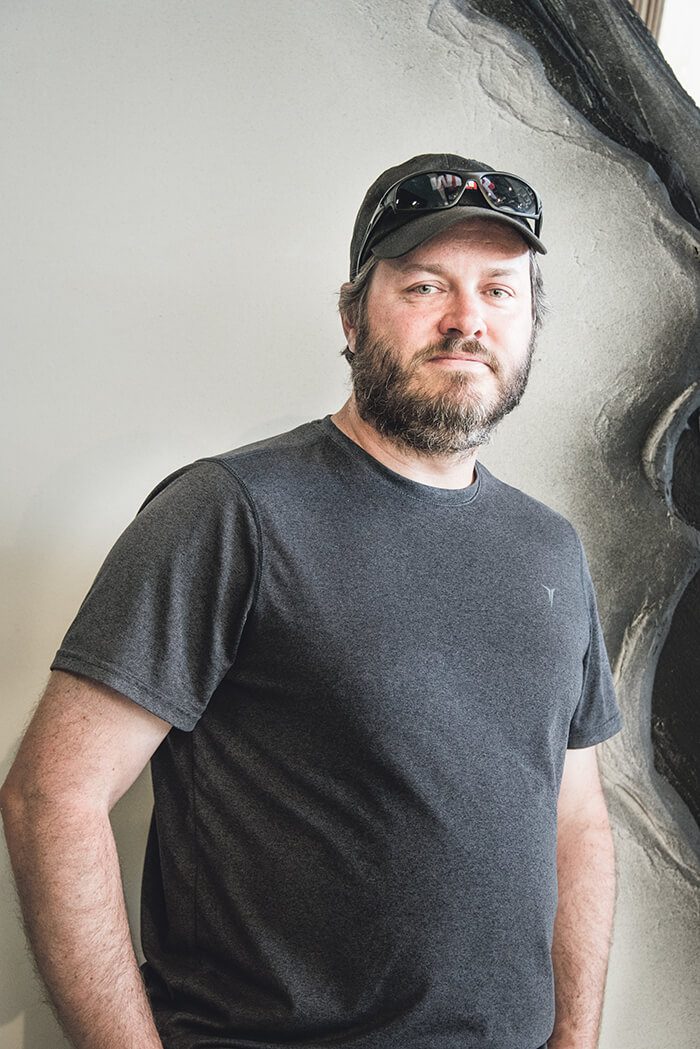
SHRINK RAY
Schreck strides across a loading dock and through an eighteen-foot-tall portal, into the cavernous fabrication studio where the second phase of his work begins. Once the set designs are mostly hashed out, his builders get to work on towering steel frameworks that are often covered with wooden skins. The height limit for each set is ostensibly eighteen feet, to fit through the shop doors, but the biggest units are built in pieces and approach twenty-two feet.
Most operas these days follow the stagione system, which means they’ll install one set at a time and complete a run of performances before moving on to the next production. Santa Fe Opera is one of a few major repertory companies which alternate productions over the course of a season. This year, Candide kicks off the season on June 29, and Madame Butterfly opens the following evening. That comes with its own array of technical challenges for the stage department.
“All the sets have to be designed to come and go from the stage in ninety minutes or less,” says Mike Ortiz, the opera’s associate technical director, who has joined Schreck on the tour. “That’s all the time we have between rehearsals [and performances].” All of the sets are built on casters—rugged wheels that allow the stagehands to quickly roll them from a hydraulic lift onto the stage. The largest units take all sixteen crew members to move, using hidden handles that dot their exteriors.
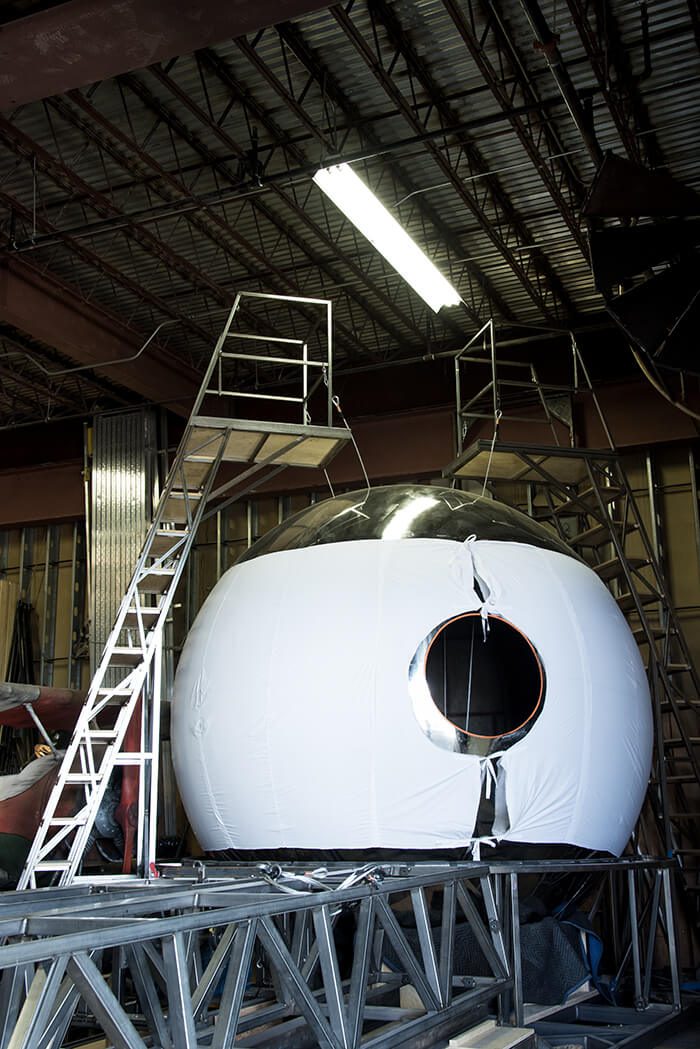
Right now, the shop is relatively quiet, with just a few carpenters hammering out final details. In the year and a half since he arrived, Schreck has worked hard to evenly distribute the production schedule throughout the year. The core building crew works four-day, forty-hour weeks in the winter and scales up to fifty-hour weeks as the season approaches. They’ve only done one sixty-hour week this year, which is a minor miracle. Despite all of his planning, Schreck admits he’s constantly under the power of Murphy’s Law. “I have his number on speed dial. It’s like, ‘Leave me alone!’” he says.
Ortiz spent the morning testing out new components for a particularly complex unit from Candide. They’re hurtling towards the debut performance, and it’s the last set they need to finesse. For Candide, the stage will transform into an enormous writing desk, with gargantuan books, papers, and maps scattered across it. Candide and his fiancée, Cunegonde, will wander among them, enacting a love story that spans continents and often teeters on the brink of tragedy.
“One of the books has pages on it that have to fall down,” Schreck explains. “For different scenes, a page falls to reveal something else on the next page.” His team went through an intense research and development process and settled on sheets of fiberglass for the pages. Each one measures ten and a half feet high by fourteen feet wide. “It had to look like paper, but we were mostly building from wood and steel and fiberglass,” says Schreck. “It also had to move like paper. That’s not easy.”
They fashioned a remote-controlled mechanism that drops the pages one by one, using compressed air cans and fishing wire. Earlier that day, a page fell and landed on Schreck—a plight straight out of Honey, I Shrunk the Kids. “It’s not heavy; it’s just the mass of it,” explains Ortiz. Schreck adds, “It’ll swat you like a flyswatter.” To avoid squashing an opera singer, Ortiz has been searching for a sturdier alternative to the fishing wire that releases the pages. The Candide set is currently onstage for just such diagnostics tests, but first Schreck and Ortiz head for the basement.
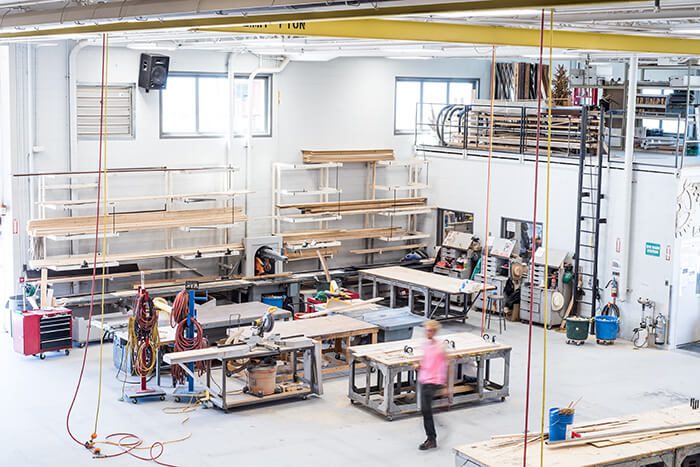
LASSO THE MOON
Nearly every opera has a catacomb, but in the Santa Fe Opera’s case, it’s not the shadowy enclave you might imagine. The overhead lighting is bright, and an expansive portal along an outer wall brings high-desert sunlight pouring in. In the corner nearest to the door, a suspended, 2,400-pound silver orb catches the glow. This is the only set piece for Doctor Atomic, a 2005 opera by John Adams and Peter Sellars. It takes place in 1940s Los Alamos at the denouement of the Manhattan Project.
Equally as significant to Doctor Atomic is the view from the opera’s open-air stage, which offers a clear line of sight to Los Alamos in the distance
“It’s definitely going to be a star of the show, because it’s just going to be there, ever-present,” says Schreck. Over the course of the opera, the orb’s support cables will carry it downstage along a motorized track, swooping it ever closer to the audience. It’s a powerful reminder of the show’s finale: the Trinity Test near Alamogordo, with its enduring implications for humanity.
Equally as significant to Doctor Atomic is the view from the opera’s open-air stage, which offers a clear line of sight to Los Alamos in the distance. “That’s why the set is so simple, so that we can always see the place where this actually happened,” Schreck explains. Should a storm blow in during the performance, Schreck is confident that the sphere is heavy enough to stay put—though he has a contingency plan that would anchor it to the stage.
Nearby, a giant black cone with a matte white disc on its end echoes the silhouette of the orb. It’s a moon that will appear in Madame Butterfly, and it’s surrounded by set pieces of a colorful garden that show up at the beginning of the opera. Just next door is a second garden, this one dingy and gnarled, that replaces the first when Cio-Cio-San’s fortunes turn.
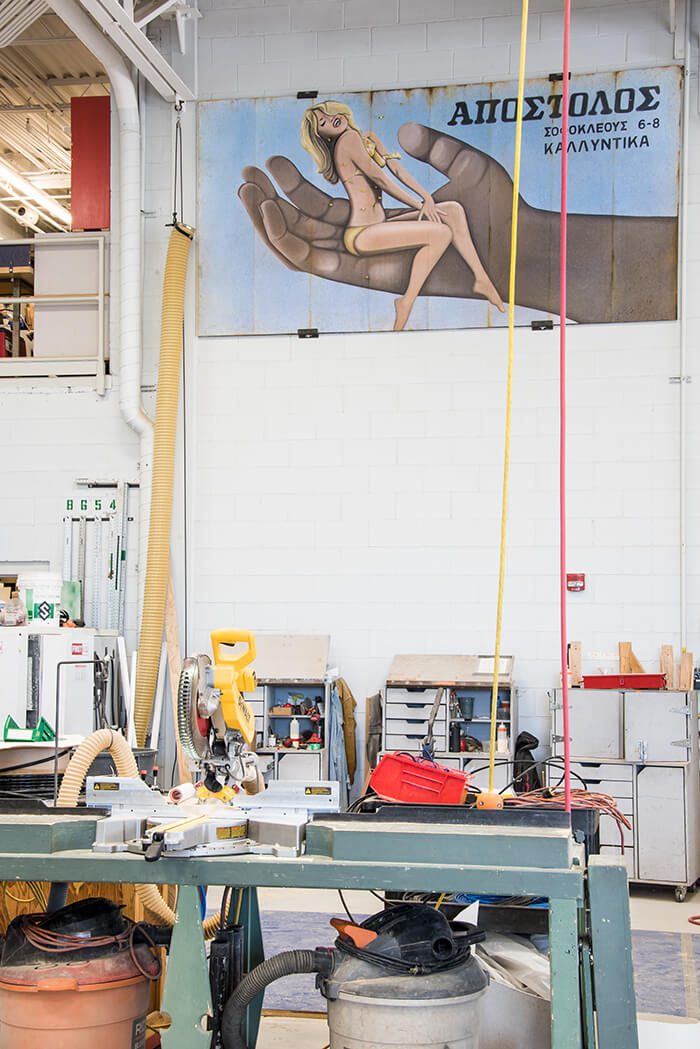
In another corner of the basement, Schreck and Ortiz stroll down a thirteen-foot-long hallway that appears in the first act of Ariadne. They point out some faux water damage along the walls and ceiling, recently added by the paint shop. Like stage makeup, the painted details are quite bold so that they’re visible to the audience. Every detail is checked from thirty feet away, the approximate distance from the set to the front row. “Our paint crew provides that last bit of texturing and aging for the set, and they also hide a lot of our crimes,” Schreck says. “A set like this enters a level of hyperrealism, so the stains are a little bit more vivid.”
Winding back through the canopy of set pieces (there’s also a life-size biplane from The Italian Girl from Algiers, and two spindly staircases from Ariadne that corkscrew towards the ceiling) Schreck and Ortiz finally head for the opera’s stage. They cut through a door that leads to the opera’s 2,128-seat house, and the bookish set of Candide finally comes into view.
It’s a breathtaking reveal, simultaneously microcosmic and macrocosmic. The pages of the books indeed look like giant sheets of paper, catching the light with an even but fibrous gradient. A stagehand strides across the papers, pushing a janitor’s broom, seemingly the size of an ant. “That’s the true magic of the theater,” says Schreck.
